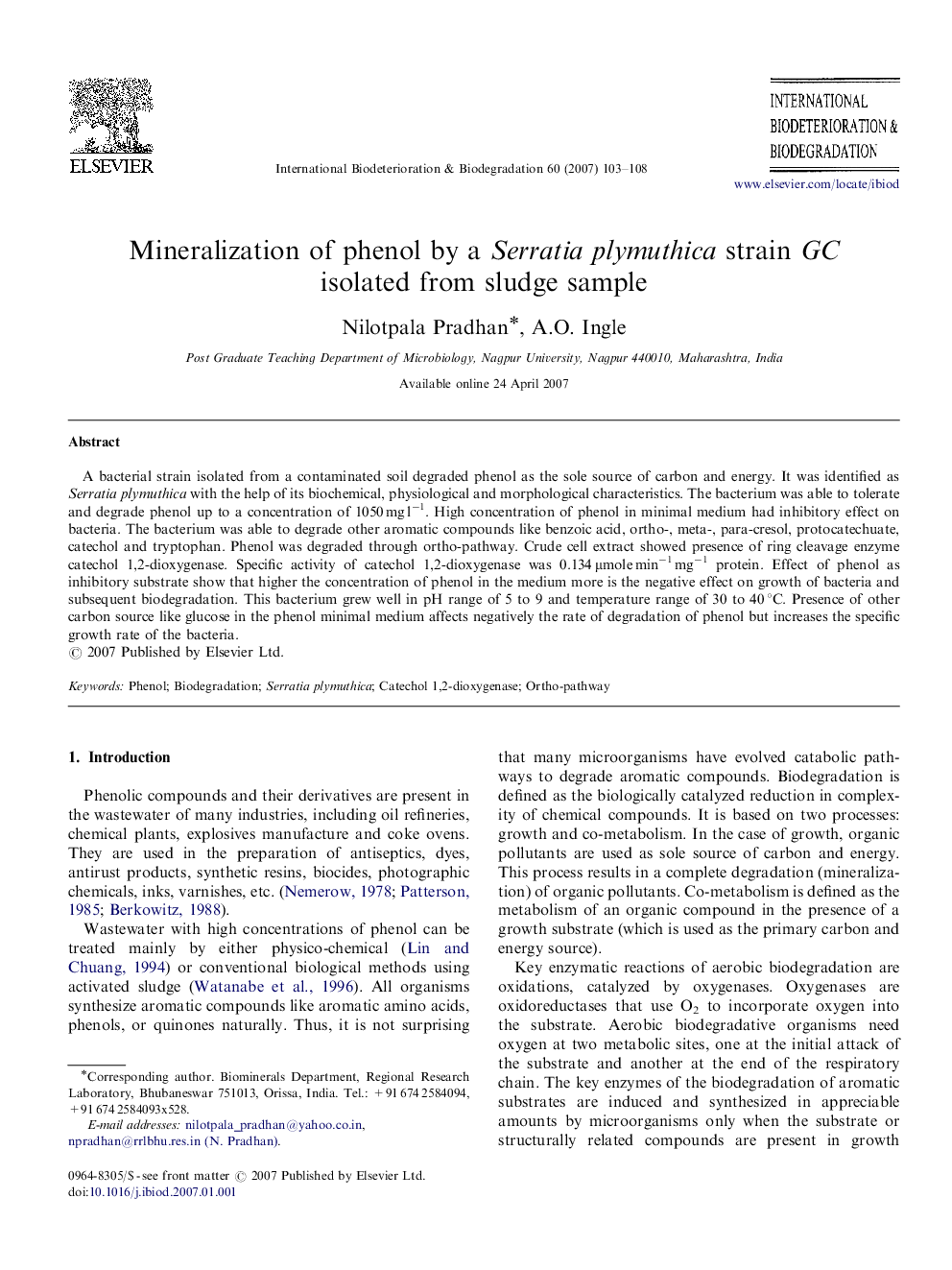| Article ID | Journal | Published Year | Pages | File Type |
|---|---|---|---|---|
| 4365999 | International Biodeterioration & Biodegradation | 2007 | 6 Pages |
A bacterial strain isolated from a contaminated soil degraded phenol as the sole source of carbon and energy. It was identified as Serratia plymuthica with the help of its biochemical, physiological and morphological characteristics. The bacterium was able to tolerate and degrade phenol up to a concentration of 1050 mg l−1. High concentration of phenol in minimal medium had inhibitory effect on bacteria. The bacterium was able to degrade other aromatic compounds like benzoic acid, ortho-, meta-, para-cresol, protocatechuate, catechol and tryptophan. Phenol was degraded through ortho-pathway. Crude cell extract showed presence of ring cleavage enzyme catechol 1,2-dioxygenase. Specific activity of catechol 1,2-dioxygenase was 0.134 μmole min−1 mg−1 protein. Effect of phenol as inhibitory substrate show that higher the concentration of phenol in the medium more is the negative effect on growth of bacteria and subsequent biodegradation. This bacterium grew well in pH range of 5 to 9 and temperature range of 30 to 40 °C. Presence of other carbon source like glucose in the phenol minimal medium affects negatively the rate of degradation of phenol but increases the specific growth rate of the bacteria.
